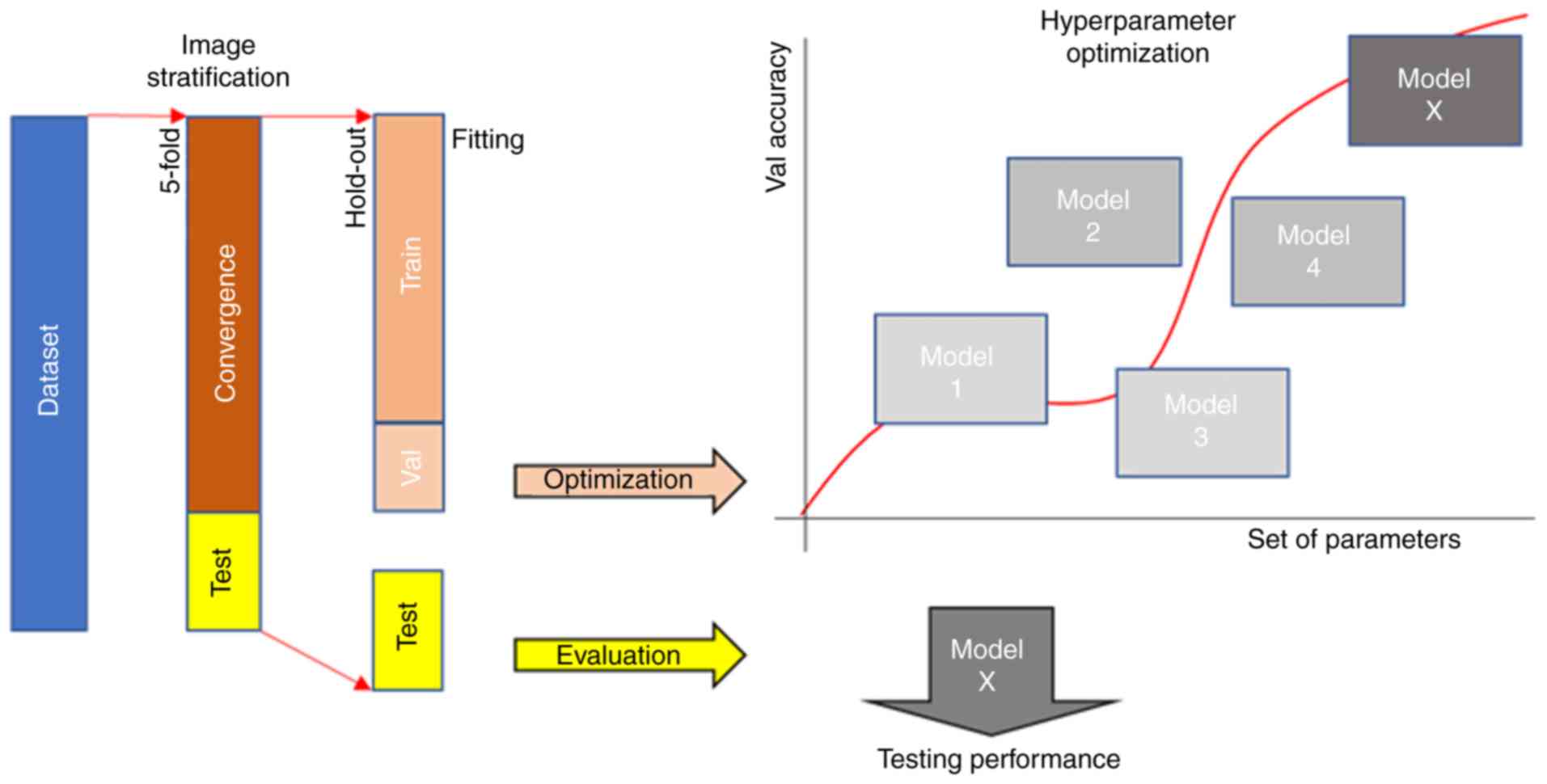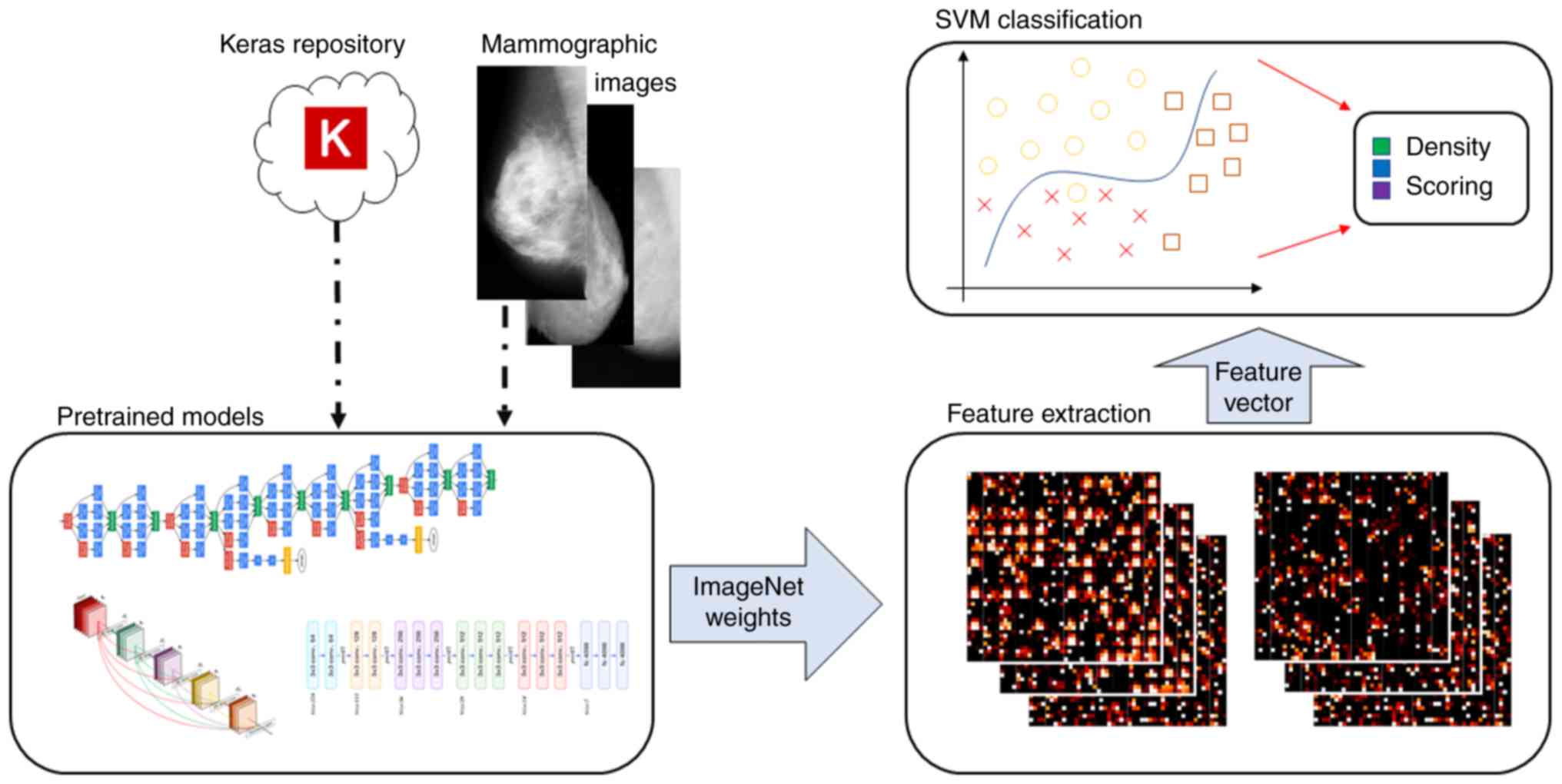|
1
|
Duffy SW, Morrish OWE, Allgood PC, Black
R, Gillan MGC, Willsher P, Cooke J, Duncan KA, Michell MJ, Dobson
HM, et al: Mammographic density and breast cancer risk in breast
screening assessment cases and women with a family history of
breast cancer. Eur J Cancer. 88:48–56. 2018. View Article : Google Scholar : PubMed/NCBI
|
|
2
|
Titus-Ernstoff L, Tosteson AN, Kasales C,
Weiss J, Goodrich M, Hatch EE and Carney PA: Breast cancer risk
factors in relation to breast density (United States). Cancer
Causes Control. 17:1281–1290. 2006. View Article : Google Scholar : PubMed/NCBI
|
|
3
|
Checka CM, Chun JE, Schnabel FR, Lee J and
Toth H: The relationship of mammographic density and age:
Implications for breast cancer screening. AJR Am J Roentgenol.
198:W292–W295. 2012. View Article : Google Scholar : PubMed/NCBI
|
|
4
|
Byrne C, Schairer C, Wolfe J, Parekh N,
Salane M, Brinton LA, Hoover R and Haile R: Mammographic features
and breast cancer risk: Effects with time, age, and menopause
status. J Natl Cancer Inst. 87:1622–1629. 1995. View Article : Google Scholar : PubMed/NCBI
|
|
5
|
D'Orsi CJ, Sickles EA, Mendelson EB,
Morris EA, et al: ACR BI-RADS® Atlas, Breast Imaging
Reporting and Data SystemReston, VA: American College of Radiology;
2013
|
|
6
|
Bovis K and Singh S: Classification of
mammographic breast density using a combined classifier paradigm.
Proceedings of the 4th International Workshop on Digital
Mammography. 177–180. 2002.
|
|
7
|
Tzikopoulos S, Georgiou H, Mavroforakis M
and Theodoridis S: A fully automated scheme for breast density
estimation and asymmetry detection of mammograms. Eur Signal
Process Conf. 1869–1873. 2009.
|
|
8
|
Oliver A, Freixenet J and Zwiggelaar R:
Automatic classification of breast densityProceedings of the IEEE
International Conference on Image Processing. IEEE; pp. II–1258.
2005
|
|
9
|
Fonseca P, Mendoza J, Wainer J, Ferrer J,
Pinto J, Guerrero J and Castaneda B: Automatic breast density
classification using a convolutional neural network architecture
search procedureProceedings of the Medical Imaging 2015.
Computer-Aided Diagnosis. 9414. SPIE Medical Imaging; Orlando, FL:
2015
|
|
10
|
Petersen K, Chernoff K, Nielsen M and Ng
AY: Breast density scoring with multiscale denoising autoencoders.
Proceedings of the MICCAI Workshop on Sparsity Techniques in
Medical Imaging. 2012.
|
|
11
|
Kallenberg M, Petersen K, Nielsen M, Ng
AY, Pengfei Diao, Igel C, Vachon CM, Holland K, Winkel RR,
Karssemeijer N and Lillholm M: Unsupervised deep learning applied
to breast density segmentation and mammographic risk scoring. IEEE
Trans Med Imaging. 35:1322–1331. 2016. View Article : Google Scholar : PubMed/NCBI
|
|
12
|
Dalal N and Triggs B: Histograms of
Oriented Gradients for Human Detection. Proceedings of the 2005
IEEE Computer Society Conference on Computer Vision and Pattern
Recognition (CVPR'05). 1. IEEE; pp. 886–893. 2005, View Article : Google Scholar
|
|
13
|
Bay H, Tuytelaars T and Van Gool L: SURF:
Speeded Up Robust FeaturesSpringer; Berlin, Heidelberg: pp.
404–417. 2006
|
|
14
|
Ojala T, Pietikainen M and Harwood D:
Performance evaluation of texture measures with classification
based on Kullback discrimination of distributions. Proceedings of
12th International Conference on Pattern Recognition. 1. IEEE; pp.
582–585. 1994, View Article : Google Scholar
|
|
15
|
Fogel I and Sagi D: Gabor filters as
texture discriminator. Biol Cybern. 61:103–113. 1989. View Article : Google Scholar
|
|
16
|
Deng J, Dong W, Socher R, Li LJ, Li K and
Fei-Fei L: ImageNet: A Large-Scale Hierarchical Image
DatabaseProceedings of 2009 IEEE Conference on Computer Vision and
Pattern Recognition. IEEE; 2009, View Article : Google Scholar
|
|
17
|
Otsu N: A Threshold selection method from
gray-level histograms. IEEE Trans Syst Man Cybern. 9:62–66. 1979.
View Article : Google Scholar
|
|
18
|
Ma WY and Manjunath BS: EdgeFlow: A
technique for boundary detection and image segmentation. IEEE Trans
Image Process. 9:1375–1388. 2000. View Article : Google Scholar : PubMed/NCBI
|
|
19
|
Yang W, Wang K and Zuo W: Fast
neighborhood component analysis. Neurocomput. 83:31–37. 2012.
View Article : Google Scholar
|
|
20
|
Zhao W, Chellappa R and Phillips PJ:
Subspace Linear Discriminant Analysis for Face Recognition
(Technical Report CAR-TR-914)Center for Automation Research
University of Maryland; College Park, MD: 1999
|
|
21
|
Chollet F: Keras. GitHub Repository.
2015.
|
|
22
|
Lehman CD, Yala A, Schuster T, Dontchos B,
Bahl M, Swanson K and Barzilay R: Mammographic breast density
assessment using deep learning: Clinical implementation. Radiology.
290:52–58. 2019. View Article : Google Scholar : PubMed/NCBI
|
|
23
|
Mohamed AA, Berg WA, Peng H, Luo Y,
Jankowitz RC and Wu S: A deep learning method for classifying
mammographic breast density categories. Med Phys. 45:314–321. 2018.
View Article : Google Scholar : PubMed/NCBI
|
|
24
|
Ma X, Fisher CE, Wei J, et al: Multi-path
deep learning model for automated mammographic density
categorizationProceedings of the Medical Imaging 2019.
Computer-Aided Diagnosis. 10950. SPIE Medical Imaging; pp.
862019
|


















